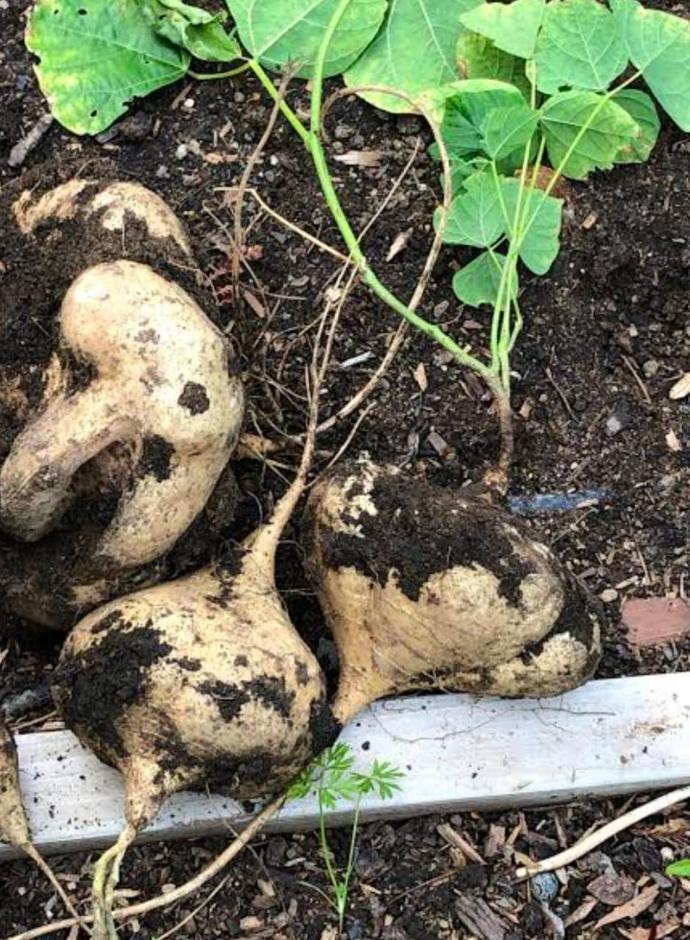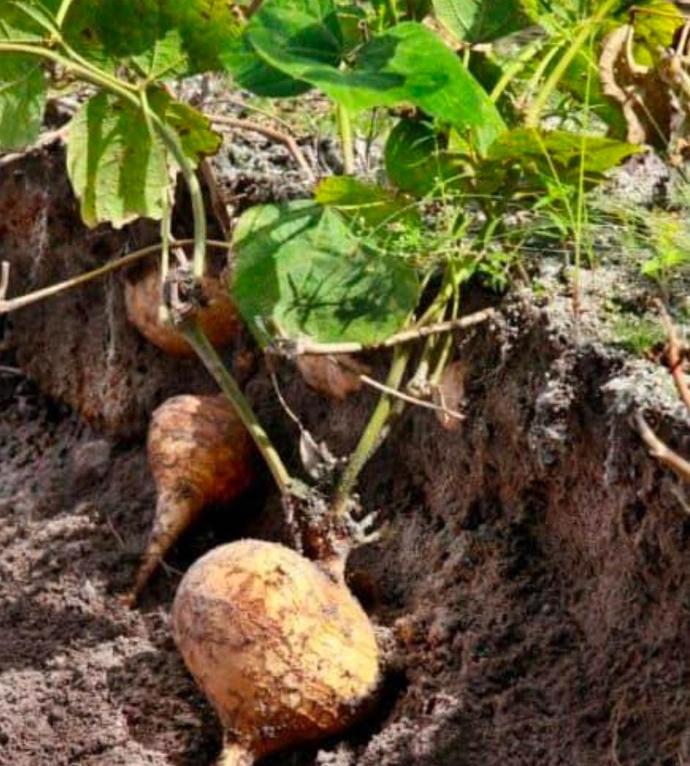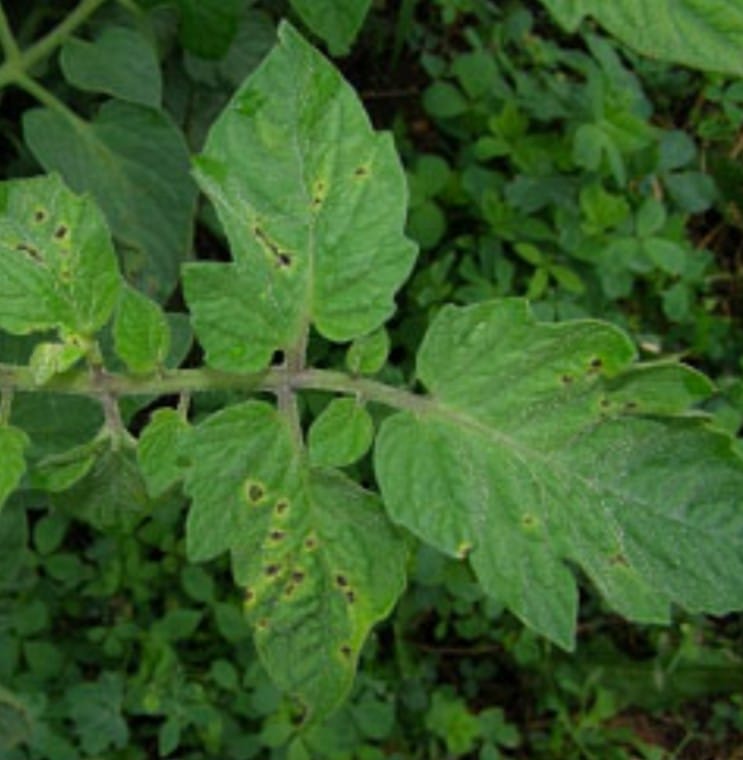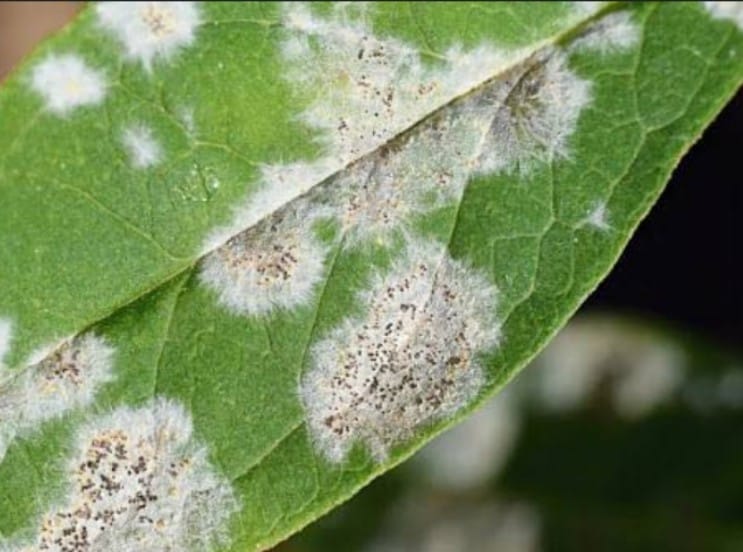Jicama Plant
Jicama, a perennial, requires fast-draining sandy-loam soil and full sun. Its frost-sensitive and grows best in moist conditions.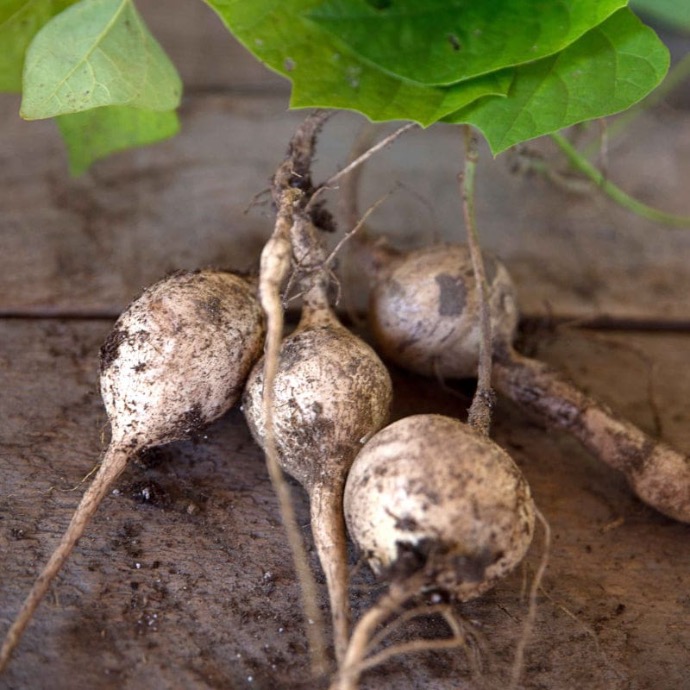
Habit
Perennial
Height
2-4 meters
Growth
Fast
Soil
Sandy, well-drained
Shade
Full Sun
Moisture
Moist
Edible
Yes
Medicinal
No
Origin
Mexico
Climatic Condition
Tropical, subtropical
Temperature (°)
20-30
Humidity (%)
60-80
Potting media
Cactus mix, sandy soil
Fertilizers
Nitrogen-rich
Watering
High
Plant Weight
2-5 kg
Flowering Time
Fall to Winter
Soil Ph level
6.0-7.0
Water Ph level
6.5-7.5
Soil EC
0.4-0.6 mS/cm
Yield Per Plant
Moderate
NPK ratio
5:10:10
life Span
4-7 years
Health Benefits
High in fiber, supports weight loss
Suggested Grow Media or Potting Mix ?
50% loamy soil, 30% compost, 20% sand
Suggested Fertigation/Fertilizers
Fertilize every 3-4 weeks with a balanced fertilizer.
Common Diseases and Remedies
Root Rot .
Signs of root rot are slow growth, mushy stems, and wilting, yellow, distorted leaves , Usually the soil will smell rotten and the roots will appear to be reddish brown
Avoid over watering , Proper drainage systems .
HEALTH BENEFITS
· High in fiber and prebiotics
· Supports gut health and digestion
· Lowers blood sugar levels
What Is Jicama?
Jicama is known by many names, including “yam bean,” “Mexican turnip,” and “Chinese potato.” The Spanish word "jicama" comes from the Nahuatl (Aztec) word xicama.
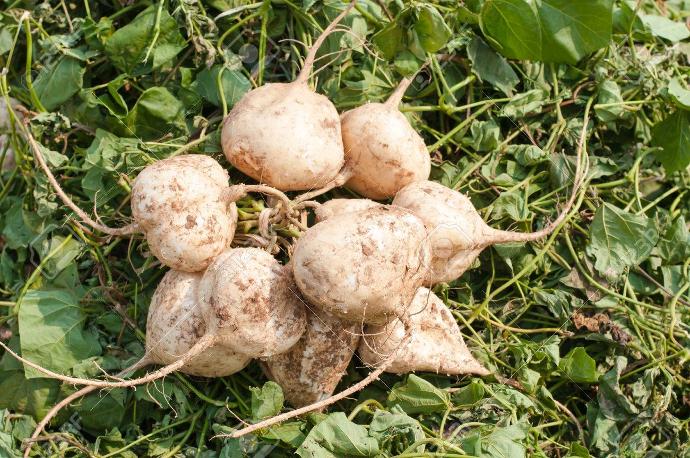
What Are The Different Types Jicama?
Pachyrhizus erosus:
Produces small oval-shaped tubers.
Pachyrhizus tuberosus:
Larger than Erosus, usually eaten raw.
How to care for jicama
Space jicama is planted 12 inches apart in warm, well-drained, rich soil. Improve soil naturally by mixing in a few inches of old compost or other rich organic matter. Jicama grows quickly, so keep the soil moist and fertilize regularly for a continued release of nutrients.
Location
Jicama is an important food crop in Mexico and Central and South America. Some types (called jícama de aqua in Spanish) contain juice, and some types (jícama de leche) contain white milk.
Sunlight
Good plant in full sun. This species is long-day sensitive, meaning it will not produce tubers until the end of the growing season when daylight hours are less than nine hours.
Soil
Loam is a mixture of sand, silt and clay. It is generally the best soil for agriculture as it has good water retention capacity. Loamy soil also contains many nutrients and humus (organic matter) that plants need to grow.
Hydration
Although Jicama does not tolerate wet soil, it needs to be well watered. The soil should not dry out. Water your plants at soil level, not at leaf level. Make sure your jicama plant receives at least 2 inches of water per week to mature and produce healthy tubers.
Nourishment
Jicama contains many important vitamins and minerals such as vitamin C, folate, potassium and magnesium. It is low in calories and high in fiber and water. It also contains antioxidants such as vitamins C and E and beta-carotene.
Issues
Search online for sources of jicama or jicama seeds, as some seeds or plants are available at local garden centers or nurseries. Climate: Jicama grows best in warm climates with cool temperatures and short summers. Temperatures below 50° can damage plants. Soil: Jicama needs well-drained soil and does not grow well in heavy, wet soil.
. What are the benefits of jicama?
Health and Nutrition Benefits of Packaged Food. Share on Pinterest. ...
rich in antioxidants. ...
Promotes heart disease. ...
Supports digestion. ...
It is good for your digestive system. …
May reduce the risk of cancer. ...
May help with weight loss. ...

FAQs About Growing Jicama
1. How long does it take for jicama to grow?
Location: full sun. Soil type: Jicama likes fertile, moist, well-drained sandy loam soil with potassium content. Small tubers can be harvested in 4 months, while large tubers take 9 months to mature. Peanuts and seeds are poisonous and dangerous to eat.
2. Where does jicama grow best?
Jicama grows best in moist but well-drained soil. For best results, regularly apply several inches of Miracle-Gro® Performance Organics® All-Purpose Subsoil to your soil before planting. Jicama grows well and needs good nutrients, especially potassium from the roots
3. Is jicama a root or a stem?
Jicama is a root vegetable with thick brown skin. It is white inside and tastes similar to apple but less sweet. It's like a potato but contains much less carbohydrates. The jicama plant grows mostly on tall vines in Mexico and Central America.
4. How big is jicama?
Jicama is harvested 3 to 6 months after planting (sometimes longer) and its round roots weigh 3 to 6 pounds. If jicama is left in the soil, it will increase in size and weight (up to 20 to 40 pounds), but it will not have the plant's characteristic sweetness and as much starch.
5. How long can jicama be stored?
Store in the refrigerator: full and do not take out for up to two weeks. After peeling, place it in an airtight container with water and drink it for 3 days. To freeze: Peel and cut jicama as needed
